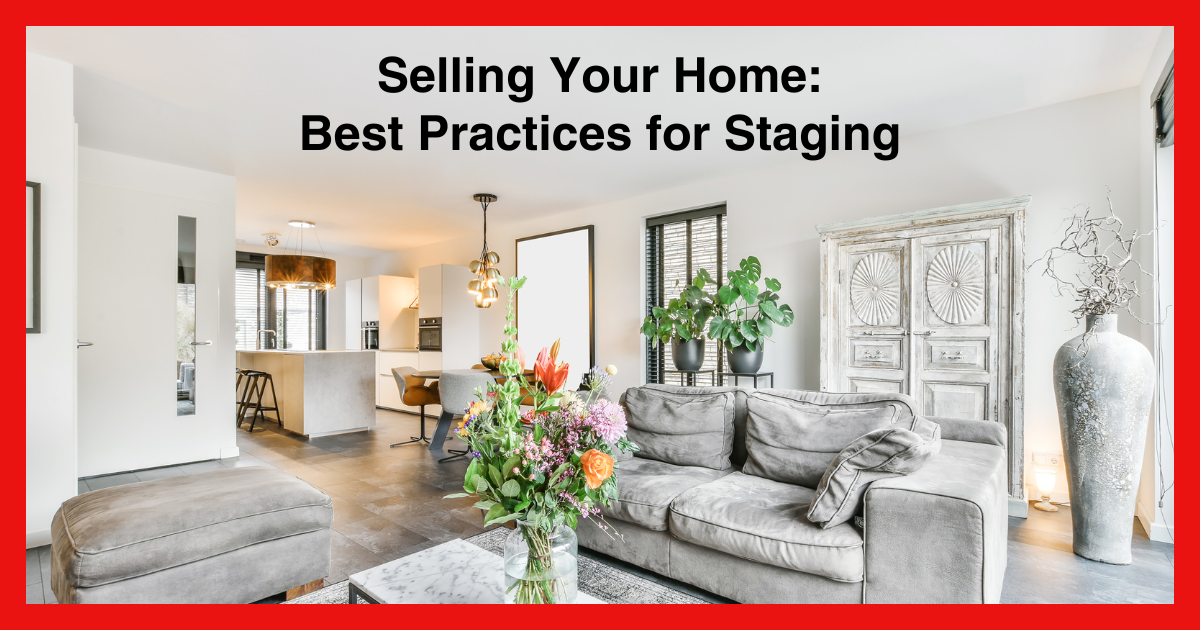
- calendar_month January 21, 2025
- folder Real Estate Tips
Thinking of selling your home? One key factor in a successful sale is staging. But how do you know how much staging is enough, and when is it worth the investment? Let's explore the best practices for staging your home to sell quickly and at the best price.
Staging Scenarios
There are four general possibilities when preparing your home for sale:
- Living in the Home: If you're living in your home while selling, balance keeping essential pieces that make the space feel homey with replacing personal or oversized items with more neutral, space-enhancing pieces you rent or purchase second-hand.
- Vacant Home with Physical Staging: If the home is vacant, stage it yourself with rented furniture or hire a professional stager. Consider your budget, time, proximity to the home, and decorating skills when deciding.
- Vacant Home with Virtual Staging: A compromise to physical staging is virtual staging for online photos. This is generally less expensive and still gives online shoppers an idea of what the home can look like furnished.
- Vacant Home without Staging: You can leave the home completely unstaged, both physically and virtually. Depending on the home and the market, this might be the best choice for return on investment.
Benefits of Staging
The goal of staging is to make your home appeal to the most potential buyers. A well-staged home helps buyers envision themselves living in the space and enhances the home by:
- Highlighting architectural details like fireplaces or built-ins, showcasing the home's unique value.
- Inspiring floorplan flow to make navigation intuitive.
- Suggesting a welcoming lifestyle, inviting buyers to imagine themselves living there.
- Making rooms appear larger through strategic furniture placement.
- Drawing attention away from design flaws with well-placed focal points, while ensuring material defects are disclosed.
Return on Investment (ROI) for Staging
Real estate agents report that staging can increase a home's sale price by 1% to 10% and significantly reduce time on the market. However, ROI varies based on market conditions and the uniqueness of the home:
- Competitive Market: In a hot market, staging is less critical since competition is high.
- Slow Market: Staging can make a significant difference in securing a quicker sale.
- High-Priced Markets: Typically, staging has a lower ROI in these areas.
- Small or Awkward Spaces: Staging can highlight functionality, such as converting a small room into an office.
- Unconventional Floor Plans: Staging can help buyers see a comfortable flow that might not be immediately obvious.
Recommendations for Staging Your Home
- Clean Thoroughly: Ensure the home is spotless, from windows to carpets, cabinets, and closets. Don’t forget to pressure wash the exterior, driveways, walkways, and patios. If the home isn’t clean, buyers will assume that larger maintenance issues have been ignored.
- Declutter: Remove excess items and organize storage spaces. Clear countertops in kitchens and bathrooms to maximize perceived space.
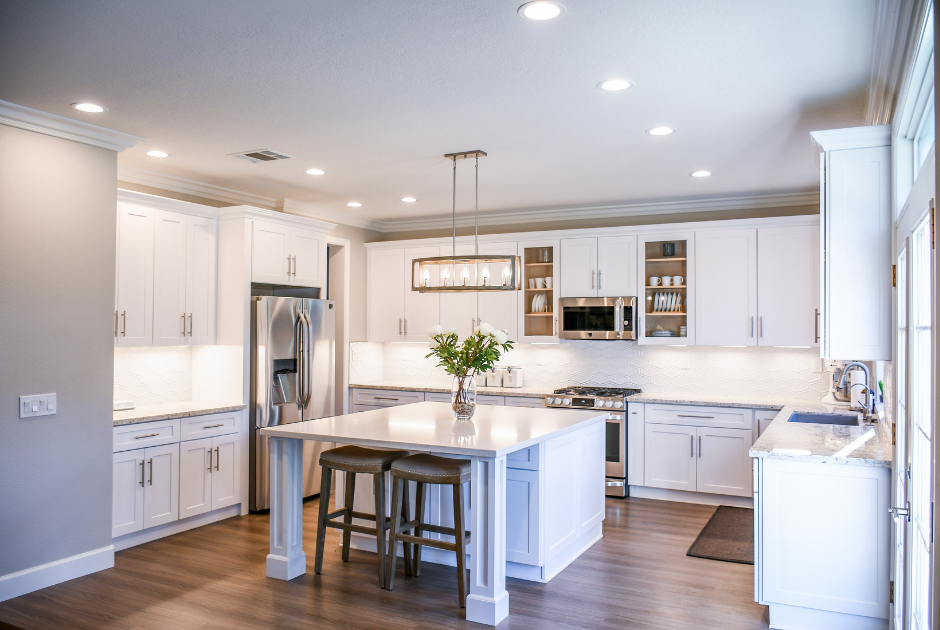 Decluttered countertops and organized cabinets create an appealing kitchen.
Decluttered countertops and organized cabinets create an appealing kitchen.
- Furniture Arrangement: Remove extra furniture and arrange remaining pieces to create a comfortable flow. Avoid placing furniture against walls, and use area rugs to tie rooms together.
- Wall Decorations: Opt for a few large, neutral pieces of art and remove small, cluttering decorations.
- Personal Items: Remove personal photos, religious, or political items to create a neutral environment.
- Paint: Repaint strongly colored or dirty walls with light, neutral colors to appeal broadly and enhance online photographs.
- Window Treatments: Replace heavy or outdated treatments with light, neutral options, or leave windows bare.
- Bathroom Updates: Update worn shower curtains, rugs, and towels. Remove bathmats. Use light-colored accessories. Recaulk if the existing caulk is discolored.
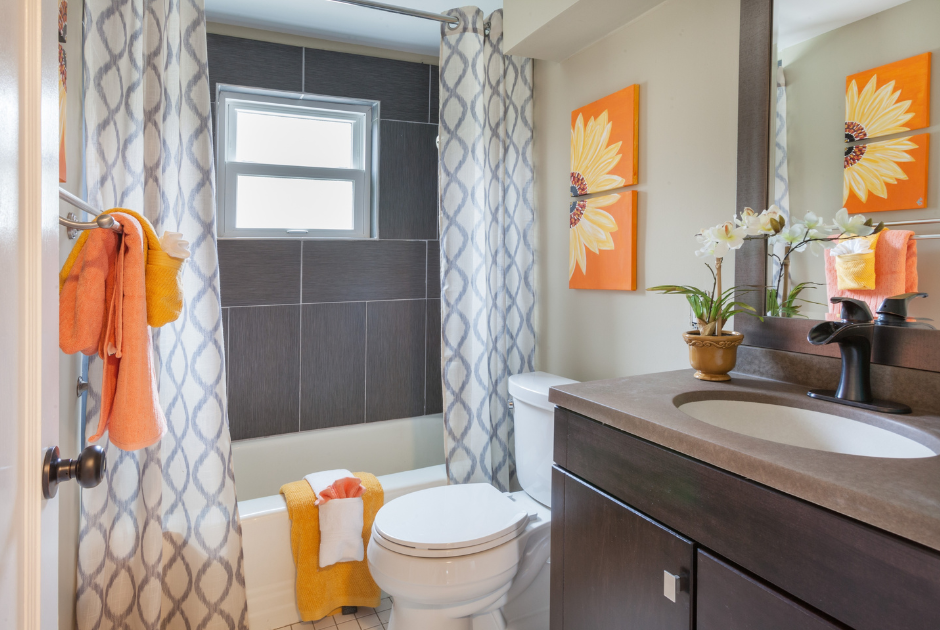
A few, bright accessories are used as focal points in this neutral-colored bathroom.
- Accessories: Add fresh flowers, decorative towels, table place mats and settings, furniture throws, and pillows to add texture and color.
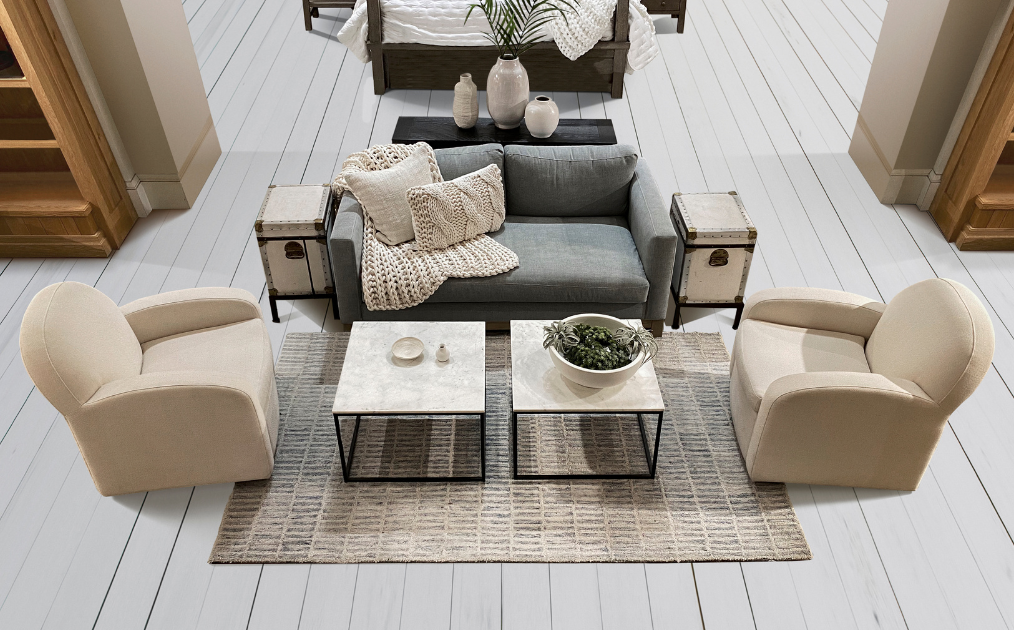
A textured throw and pillows are used to add interest to this setting. An area rug defines the seating area.
- Lighting: Ensure all bulbs work and match light colors across rooms for a cohesive look.
- Yard and Patio: Maintain the lawn, add flowers, add fresh mulch, and create inviting seating areas. Consider using potted plants in key areas. Accessorizing with brightly colored seat cushions and an umbrella can add a happy note. Put extra focus on the front yard for strong first impressions.
- Front Entrance: The front entrance creates the first impression upon entering the home. Clean thoroughly, wash light fixtures, polish hardware, and repaint the door if necessary. Add a new welcome mat.
- Odor Control: Ensure the home smells fresh. Avoid overpowering air fresheners; instead, opt for fresh flowers or subtle diffusers.
Other Considerations
- Architectural Style: Ensure colors and furniture styles complement the home’s character to create a harmonious look. For example, a classic craftsman home with all interior walls painted white and furnished with sleek, modern furniture would be jarring.
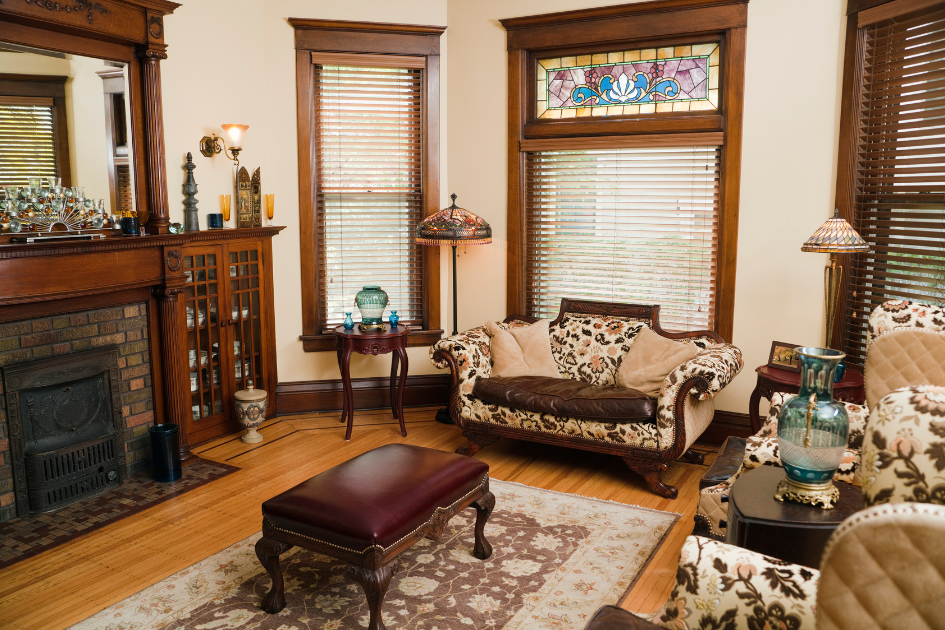
The colors and styles in staging this home were selected to complement the home’s style and character.
- Partially Staging a Vacant Home: If you decide to only stage part of a home, focus on key areas like the living room, master bedroom, and kitchen, and address awkward spaces to show their potential.
- Using Your Own Furniture vs. Renting or Buying Used Furniture: Worn or distracting upholstery can be covered with neutral-colored slipcovers. If your furniture is too large or outdated, consider renting or buying used items.
- Hiring a Professional Stager: Your real estate agent can evaluate your home and advise you on the most important items to correct and stage before your home goes on the market. For a more comprehensive approach, consider hiring a professional stager, especially in a slow market or if you are seeking top dollar for your home. Professional staging is also helpful for homes with awkward floor plans or architecture. And if you are feeling overwhelmed or stressed, professional staging can alleviate those feelings by taking the burden off your shoulders.
- Virtual Staging: One of the latest trends that exploded with the popularity of online home browsing is virtual staging. Virtual staging enhances online property photos by adding or replacing furniture digitally. It serves the same purpose as physical staging but is typically less expensive. Virtual staging can be a good budget compromise to physical staging. It helps garner online interest in your listing, which brings buyers in to tour your home.
Final Words
The type and extent of staging depend on many factors. Whether you handle it yourself or hire a professional, the right staging can make all the difference. Collaborating with a real estate agent can help determine the best strategy for your home and market. Reach out today for personalized advice!
